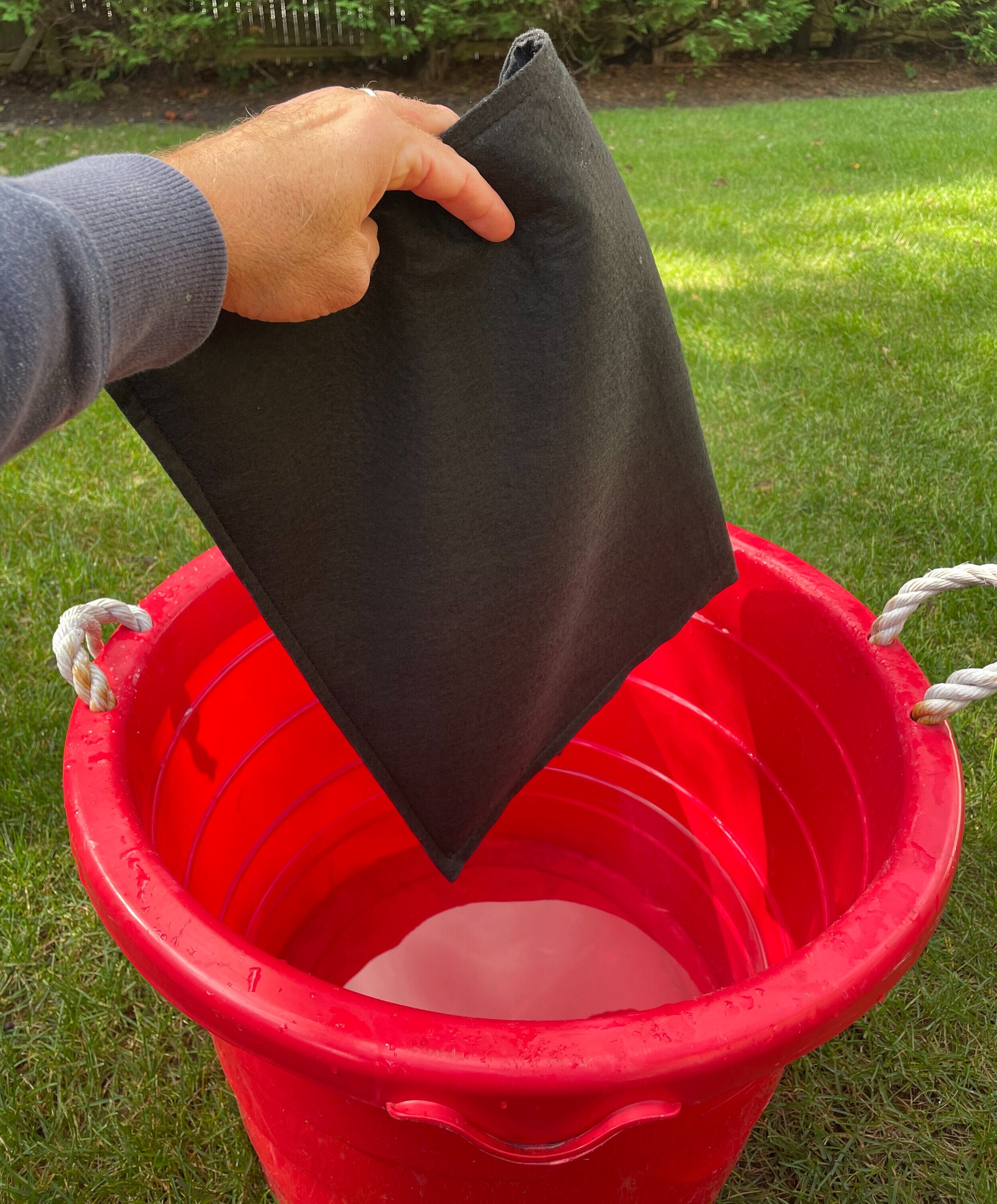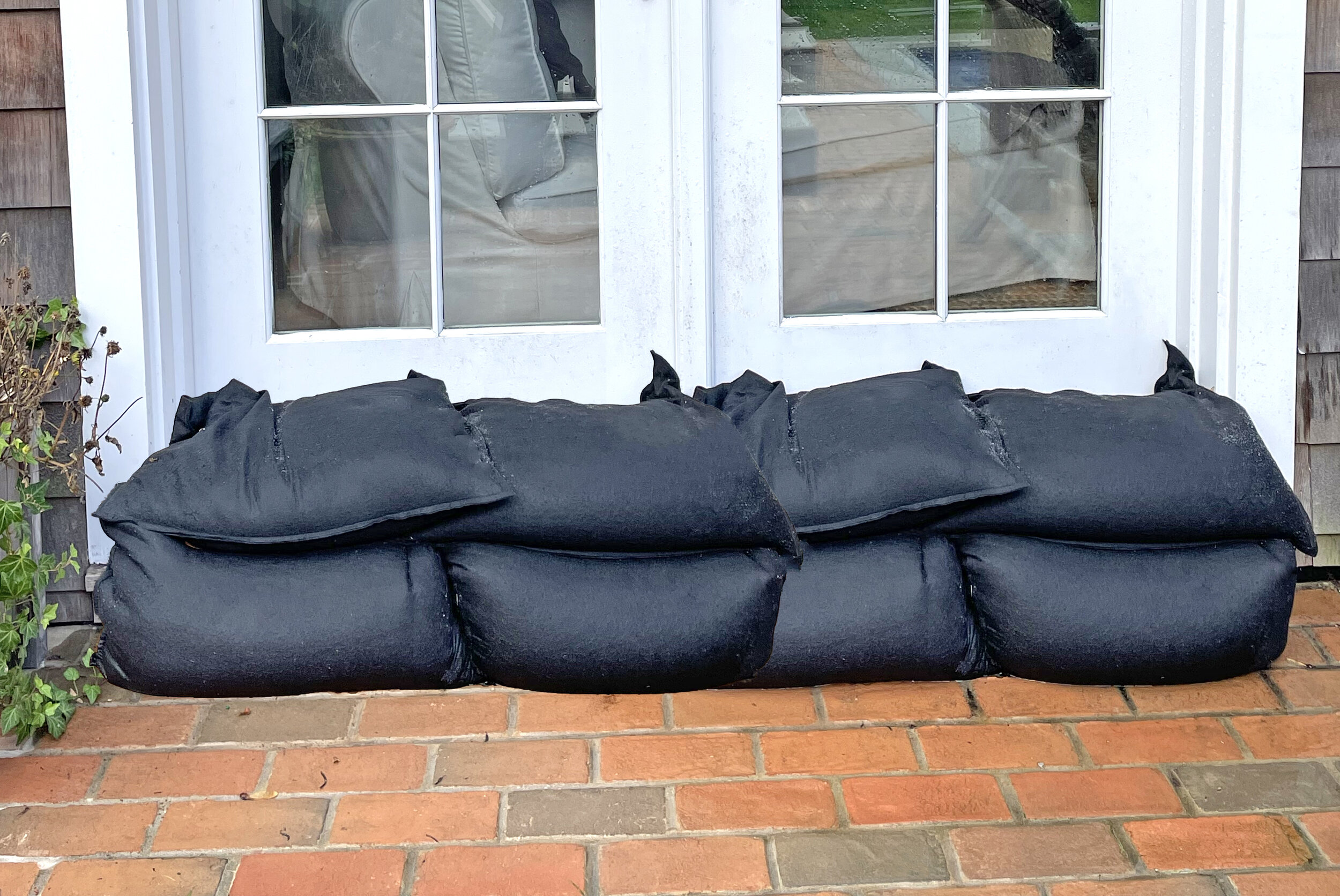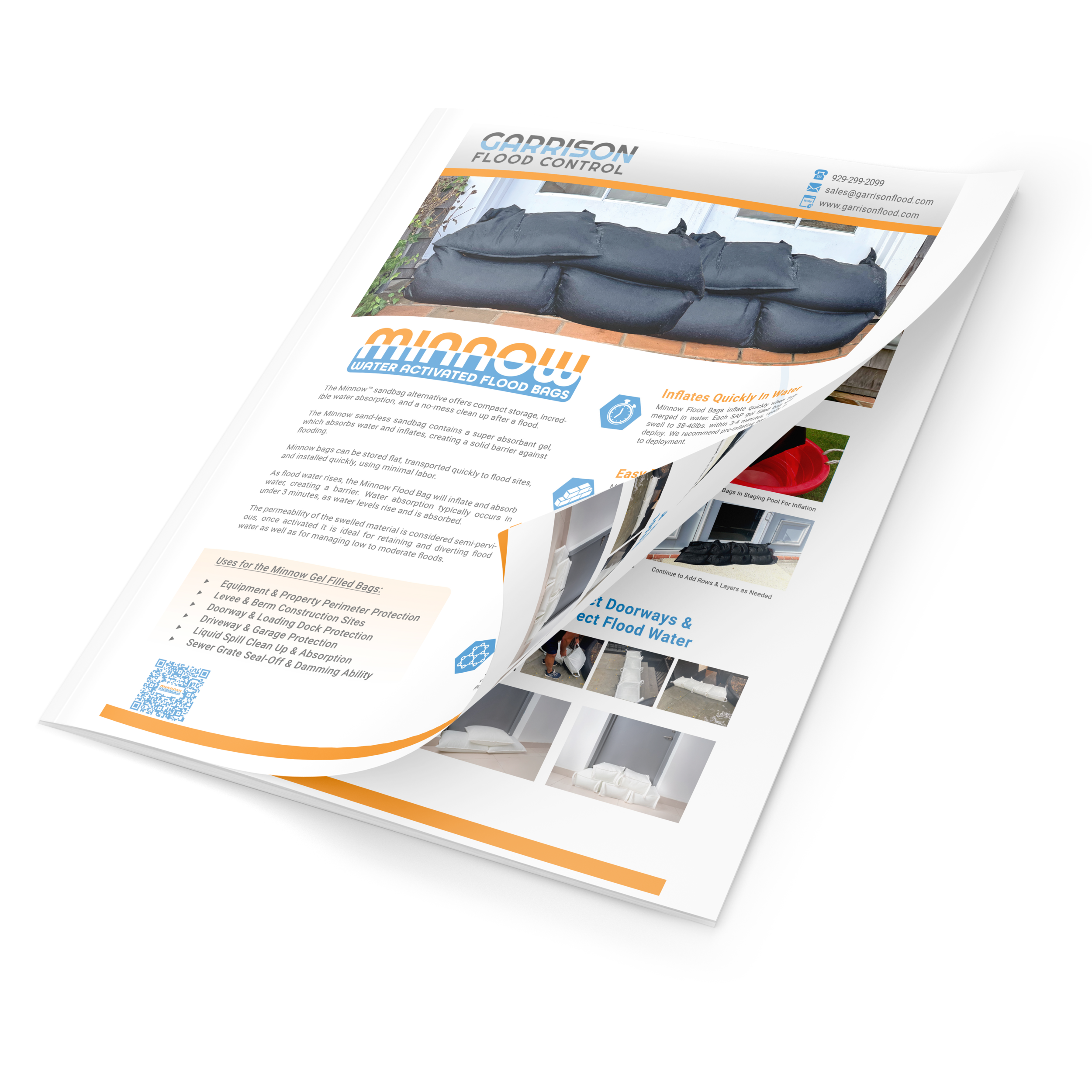Installation Instructions.
Minnow bags are designed to be an alternative to difficult to deploy sandbags.
Sandbags have been used for millennia to protect against flooding by building dikes, berms, and walls around important infrastructure and property. Sandless Minnow bags are designed to be an easy to use alternative to traditional sandbags. Unlike sandbags, gel filled bags don’t need to be filled on site, a time consuming task.
Because Minnow bags are gel filled bags that swell with water to self inflate, they require a somewhat different deployment method than standard sandbags, but otherwise serve a similar function.
How Do Minnow™ Flood Bags Work?
The secret to the sandless Minnow flood bag is its non-woven outer construction, filled with a hydrophilic SAP (Super Absorbent Polymer), capable of absorbing 39-44 lbs of water. Once inflated, bags provide resistance to rising and flowing water, similar to traditional sand bags.
Minnow gel filled bags may also be used for spill clean up, as Minnow will absorb and lock-in water.
Remove Minnow Bags From Vacuum Pouch.
Remove your minnow flood bags from the vacuum sealed pouch by slicing the pouch to open it. Be careful not to cut the Minnow bags by mistake. The Minnow with handles has 4 bags in a sealed bag and the standard Minnow has 5 bags in a pouch. Remember that once filled, gel bags will weigh up to 40 lbs., and you should be careful not to lift or swing bags in a way that could strain your back. It’s always better to have two people move bags if the bags seem too heavy.
Place bags in staging pool for inflation.
It takes about 3 minutes for a Minnow flood bag to swell to full size, by absorbing the water around it. While you could conceivably place bags in position to absorb rising waters, we typically recommend pre-inflating the bags in a staging pool, prior to laying them out. In this way you ensure rising floodwaters do not overwhelm the Minnow bags before they are inflated and you can ensure proper placement and good seal between bags. Staging pools can be simple kiddie pools filled with water or plastic basin.
Important: Always inflate Minnow bags with fresh (not salt) water.
Place a first row of bags down, with its long side parallel to water.
We recommend placing gel filled bags with the long side facing the water, minimizing the number of initial seams exposed. Be sure to abut Minnow bags as closely as possible to each other and any side walls, to minimize the chance of water seepage. The gel filled bags have some flexibility, allowing for some reshaping
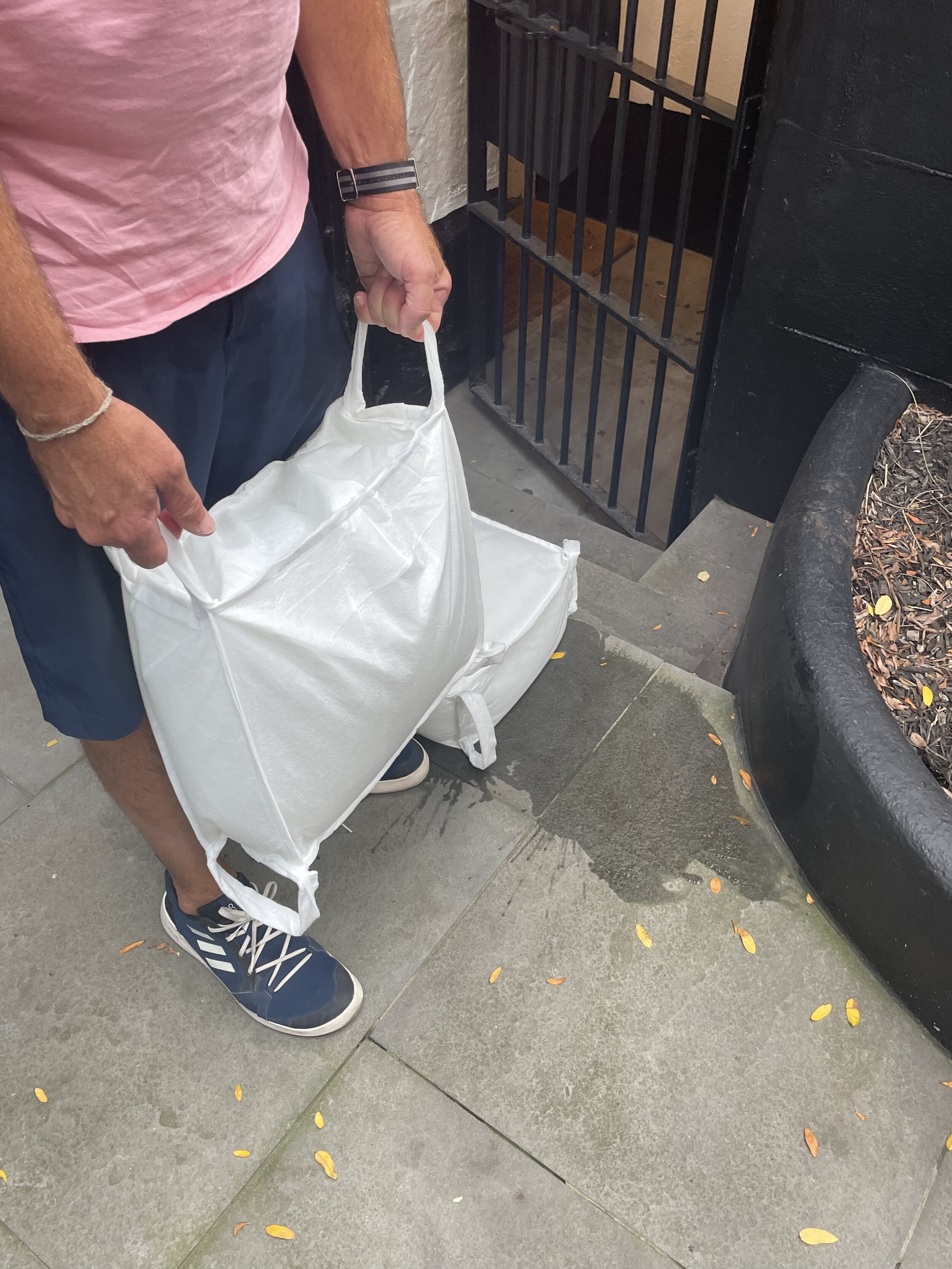
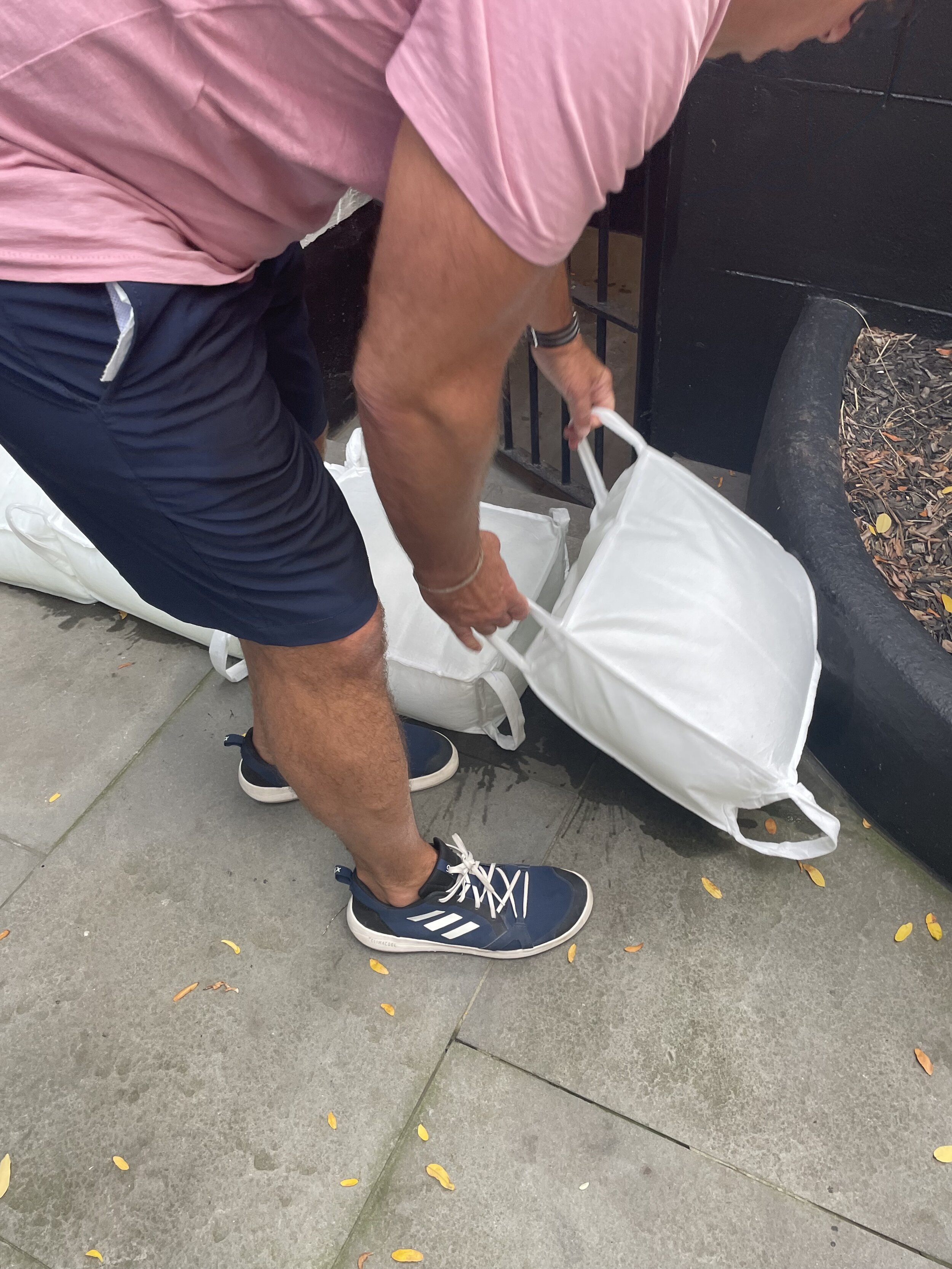
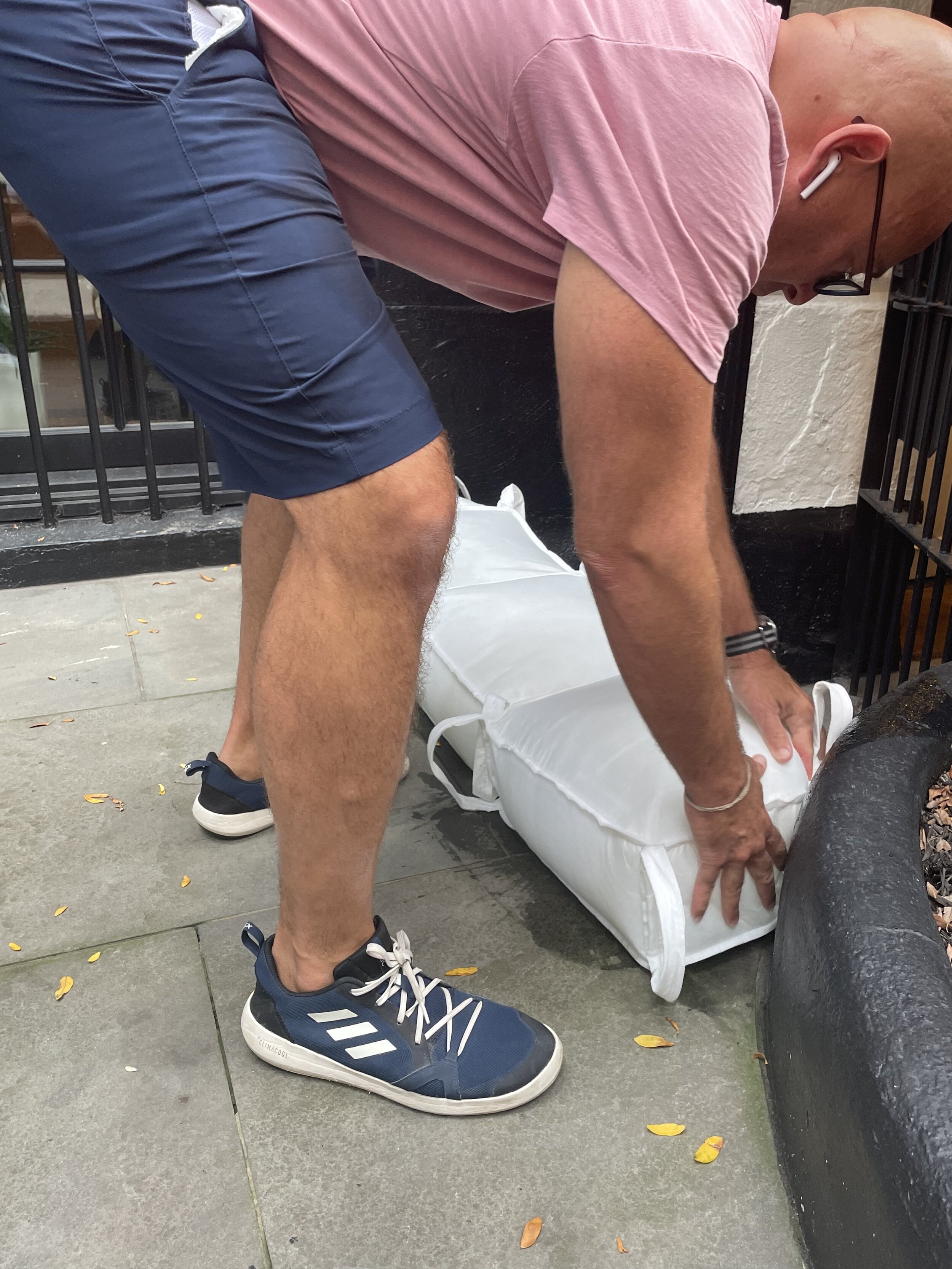
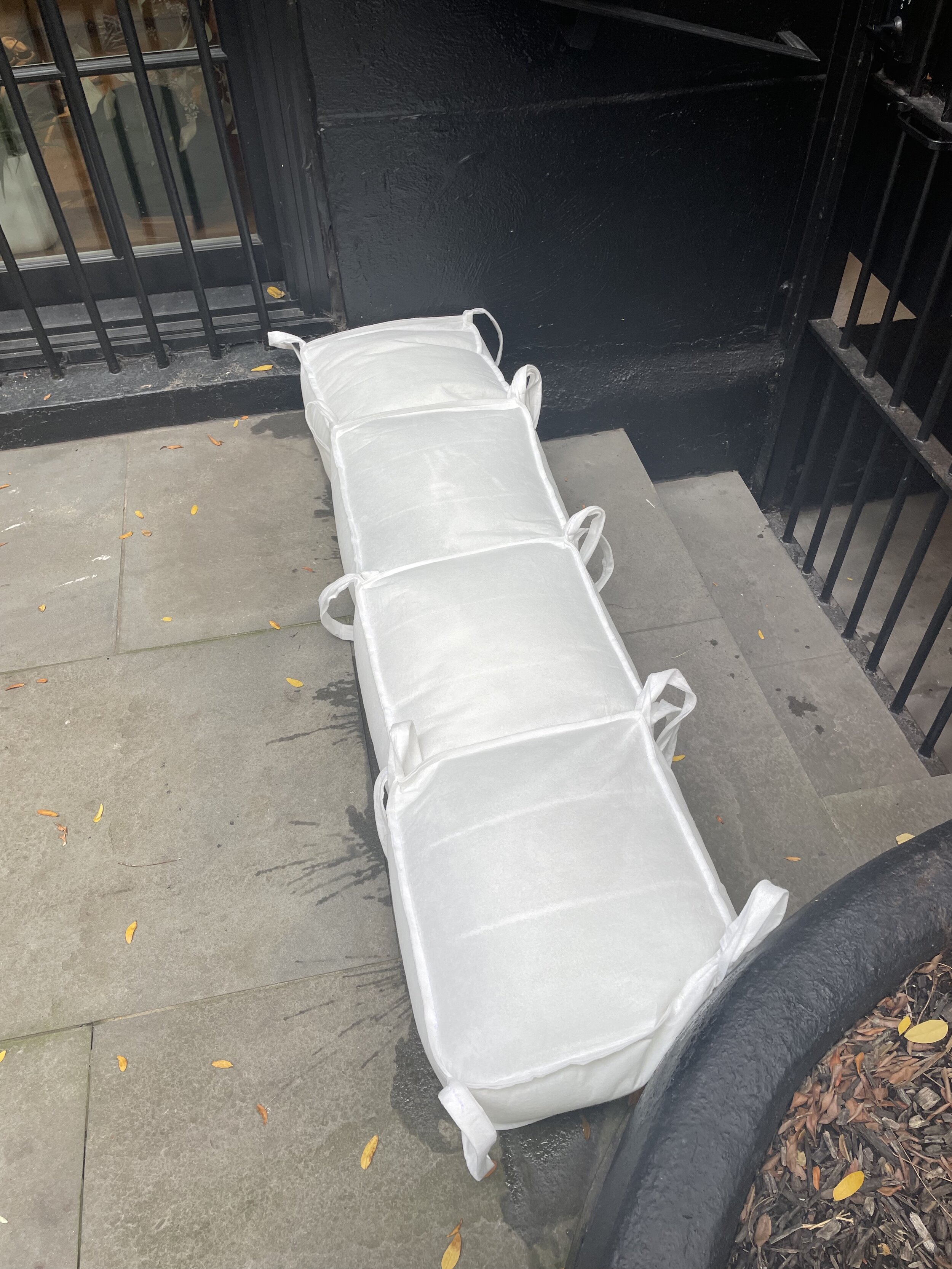
Continue to add rows and layers as needed.
After a layer or two, most engineers recommend that the base of a wall is 2-3x the height of the wall, such that a 2ft wall wall should have roughly a 4 to 6 ft wide base. This prevents water seepage and provide sufficient strength to resist water loads from rising floodwaters.
When adding rows, be sure to stagger the next row of sandless sandbags, in a brick lay style, to prevent seepage between seams and to provide greater flood protection.
How Many Minnow Flood Bags Do I Need?
Depending on which Minnow bag style you choose (with or without handles), you will need a different quantity of bags to meet your needs. A standard sandbag is 23.62” L x 15.75” W and as such, you need roughly one sandbag for every two feet. Of course, you will want to abut Minnow flood bags closely to each other and the gel will conform to the ground and can be manipulated and moved around a bit. As such, for a 10ft run, we usually recommend about 6 Standard Minnow to be safe. The Minnow with handles is 15.75”L X 14.17”W and we recommend using the long side against the water (water side). The gel in the square bag can also be moved around a bit and manipulated, but not as much as the Standard sandbag. As such, for 10ft run, you would need 8 bags to meet your needs.
Remember, that while you can stack Minnow bags, we recommend widening the base when stacking higher than two bags. Of course, this mostly applies to standalone walls vs. when bags are stacked against a structure (door, etc.) to protect against rising water. For standalone walls, we recommend roughly 2x the height in the width., so a 1ft tall wall should have a 2ft width. As such a 1ft tall x 10ft long standalone wall, using pillow shaped Minnow bags should use about 36 bags, or 3 bags H x 6 bags long x 2 bags wide.



